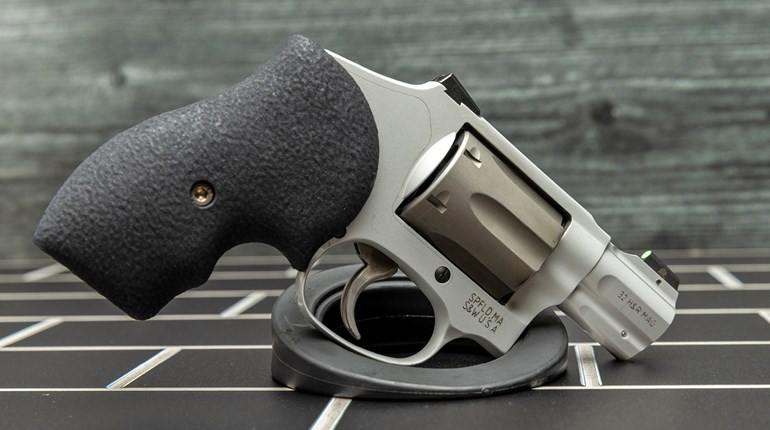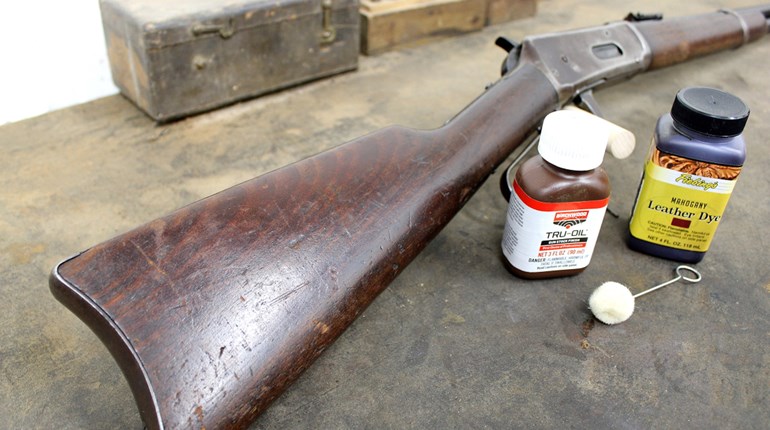
Above is the author's customized Glock 20, which has a grip frame reduction similar in size to the G29 (call it a G29L...) and a Leupold DeltaPoint Pro red dot. This treatment is analogous to the Colt CCO, which has a Commander-length slide with an Officer model grip.
So, if you’re newer to the shooting world, you’re probably wondering at all these offerings that are chambered for the 10mm Auto cartridge popping up from various manufacturers. “What’s the deal with this cartridge?” you wonder “I mean, is it some halfway cartridge between 9mm and .45ACP? And don’t we already have a cartridge like that in the .40 S&W?”
There’s a lot of history behind the 10mm Auto cartridge. What it was designed for, what it was adapted into, and what it has become now are very different things. Over its history, as its popularity has waxed and waned, it’s been pressed into more roles than most autopistol cartridges.
Once upon a time before the advent of the 10mm Auto, when disco was new and cars still had carburetors, there were only three relatively common “service caliber” offerings in autoloading pistols in the US: 9mm, .38 Super, and .45 ACP. Come to think of it, .38 Super wasn’t terrifically common back then, either… Anyway, there was a fair amount of distrust for the 9mm among a segment of shooters, back in that day before effective and reliable jacketed hollow points were a thing.
The .45 ACP cartridge, while beloved, had problems of its own. Its low velocity hampered barrier performance and caused more issues with drop at longer ranges than faster rounds with flatter trajectories. The size of the cartridge also meant that pistols chambered for it at the time were single-stack designs, thus giving up capacity to newer double-stack “wondernines”.
Experimenters and wildcatters tinkered with trying to find a solution; an intermediate cartridge that offered more bullet size than the 9mm and more velocity than the .45 Auto. Medium-bore handgun cartridges were nothing new -the .38-40 Win. was launching .401” bullets from Colt Peacemakers back in the late 1800s- but hadn’t really caught on with autoloaders.
Expanding on 1970s-era experimentation in Browning High Powers with a wildcat cartridge called the .40 G&A, Jeff Cooper started advocating a round he called the “.40 Super”, that would throw a 200-grain bullet at velocities in excess of 1,000 fps from a Government Model sized pistol. This is what would morph into the 10mm Auto cartridge that is still with us today.
Working with Dornaus & Dixon to make a dedicated 10mm pistol, a sort of swole CZ USA CZ-75-looking thing, and Norma A.B. of Sweden for the ammunition, Cooper’s brainchild came to market in 1983 as the Bren Ten chambered in 10mm Auto.
Production was fraught with issues, though. Early guns shipped with promissory notes in lieu of magazines, since mag production from an outside contractor was lagging. The pistols themselves were priced like imported sin, stickering at $500 at a time when that would buy a serviceable used car.
Despite famous product placement in Miami Vice, the Bren Ten sank fast and that likely would have spelled the end of the cartridge if not for two things: Colt’s launch of the Delta Elite, and the FBI’s hunt for a deeper penetrating service cartridge in the wake of the 1986 Miami Massacre. In the FBI’s testing, the Norma 170-grain JHP averaged a respectable 1,358 fps and was the top cartridge tested in the FBI’s “Wound Value” score.
Writer Daniel Watters noted it also got tagged in the test report with a note in large, bolded font: “CAUTION: Velocities, pressures and recoil are extreme, vary greatly, and damage weapons with extended use. Control for multiple shots extremely difficult.” Coincidentally, this also summed up law enforcement’s brief flirtation with the cartridge. Full-house 10mm ammo was hard on guns and resulted in shot-to-shot split times you could measure with a sundial rather than a PACT timer.
While its time in the duty cartridge spotlight was brief, two major companies turned out mass-production 10mm Auto handguns to compete for those duty contracts. Smith & Wesson adapted their large-frame Third Gen .45 ACP pistols to the chambering, resulting in the Model 1006 and all its various offspring, and Glock also produced a big ten, the G20.
Experimentation at the FBI’s Firearms Training Unit soon discovered that they could achieve the terminal ballistics results they sought with the same bullet moving a couple hundred feet slower. With less powder required, less case was required to hold it, and thus was born the .40 S&W and thus (mostly) died 10mm Auto’s stint as a law enforcement cartridge.
If Colt’s Delta Elite had saved it from its first near-death experience, it was Glock’s 10mm Auto models that saved it from its second one. The full-size Glock 20 and compact 29 have stayed in the Glock catalog consistently since their introductions and have recently been joined the long slide Glock 40 MOS. While availability in other platforms has waxed and waned, the reasonably-priced Glocks have offered an accessible way to dip one’s toe in the 10mm waters for better than two decades.
In its post-LE career, 10mm has become something of a niche cartridge. Seen as an autopistol alternative to magnum revolver calibers by outdoorsmen, it is no surprise that it has been the beneficiary of hot-rodding by boutique ammunition companies. DoubleTap, Underwood, Cor-Bon and others all offer spicy hunting-oriented loads designed to penetrate well even on larger game animals.
Mainstream ammunition manufacturers are even getting in on the act. Federal Premium offers a 180-grain Trophy Bonded JSP claiming 1,275 fps at the muzzle, a performance that slots the 10mm Auto in between hot .357 Mag. and your typical .41 Mag. revolver loads.
In addition, 10mm is offered in various personal defense-oriented loadings, too. Winchester’s 175-grain Silvertip JHP is still around, and Hornady loads a 10mm Auto variant of its well-reviewed Critical Duty line. Ammunition newcomer SIG Sauer has its V-Crown JHP in 10mm Auto, too. In testing in my own G20, the SIG ammo averaged 1,168 fps; warmer than any .40 of comparable weight by nearly two hundred feet per second, but not beyond the bounds of control in the full-size Glock.
While it’s no longer the darling of the mainstream, the 10mm Auto cartridge is still with us, and offers capabilities other auto pistol cartridges might lack, especially if one is heading out past where the pavement ends.





































